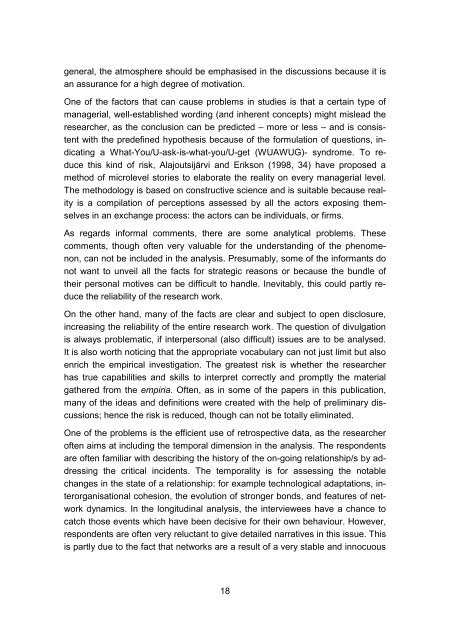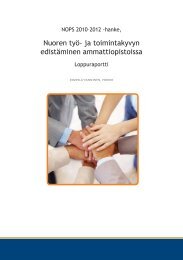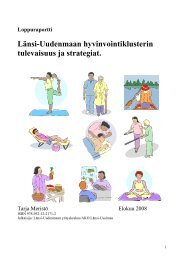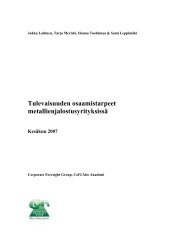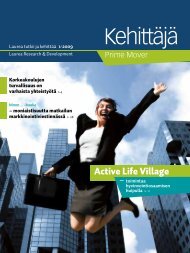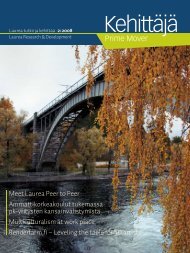849954 sisus
849954 sisus
849954 sisus
You also want an ePaper? Increase the reach of your titles
YUMPU automatically turns print PDFs into web optimized ePapers that Google loves.
general, the atmosphere should be emphasised in the discussions because it is<br />
an assurance for a high degree of motivation.<br />
One of the factors that can cause problems in studies is that a certain type of<br />
managerial, well-established wording (and inherent concepts) might mislead the<br />
researcher, as the conclusion can be predicted – more or less – and is consistent<br />
with the predefined hypothesis because of the formulation of questions, indicating<br />
a What-You/U-ask-is-what-you/U-get (WUAWUG)- syndrome. To reduce<br />
this kind of risk, Alajoutsijärvi and Erikson (1998, 34) have proposed a<br />
method of microlevel stories to elaborate the reality on every managerial level.<br />
The methodology is based on constructive science and is suitable because reality<br />
is a compilation of perceptions assessed by all the actors exposing themselves<br />
in an exchange process: the actors can be individuals, or firms.<br />
As regards informal comments, there are some analytical problems. These<br />
comments, though often very valuable for the understanding of the phenomenon,<br />
can not be included in the analysis. Presumably, some of the informants do<br />
not want to unveil all the facts for strategic reasons or because the bundle of<br />
their personal motives can be difficult to handle. Inevitably, this could partly reduce<br />
the reliability of the research work.<br />
On the other hand, many of the facts are clear and subject to open disclosure,<br />
increasing the reliability of the entire research work. The question of divulgation<br />
is always problematic, if interpersonal (also difficult) issues are to be analysed.<br />
It is also worth noticing that the appropriate vocabulary can not just limit but also<br />
enrich the empirical investigation. The greatest risk is whether the researcher<br />
has true capabilities and skills to interpret correctly and promptly the material<br />
gathered from the empiria. Often, as in some of the papers in this publication,<br />
many of the ideas and definitions were created with the help of preliminary discussions;<br />
hence the risk is reduced, though can not be totally eliminated.<br />
One of the problems is the efficient use of retrospective data, as the researcher<br />
often aims at including the temporal dimension in the analysis. The respondents<br />
are often familiar with describing the history of the on-going relationship/s by addressing<br />
the critical incidents. The temporality is for assessing the notable<br />
changes in the state of a relationship: for example technological adaptations, interorganisational<br />
cohesion, the evolution of stronger bonds, and features of network<br />
dynamics. In the longitudinal analysis, the interviewees have a chance to<br />
catch those events which have been decisive for their own behaviour. However,<br />
respondents are often very reluctant to give detailed narratives in this issue. This<br />
is partly due to the fact that networks are a result of a very stable and innocuous<br />
18


